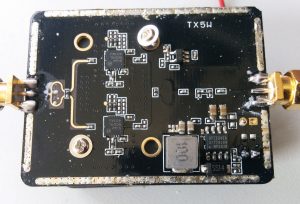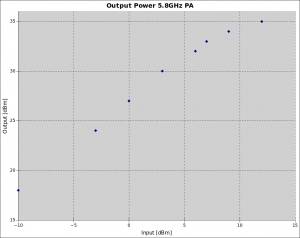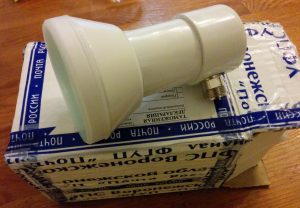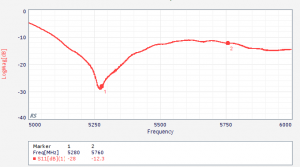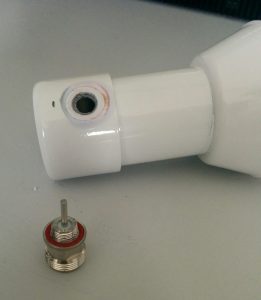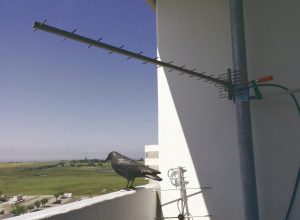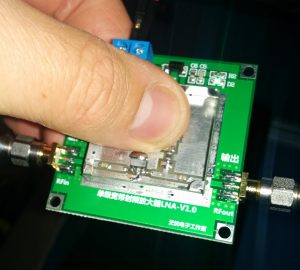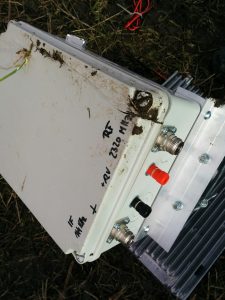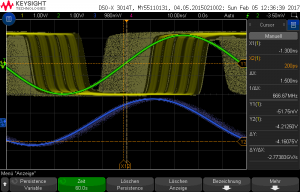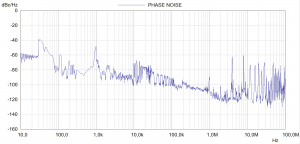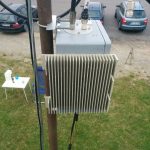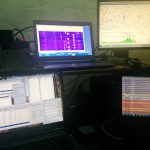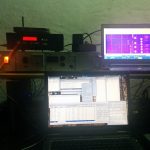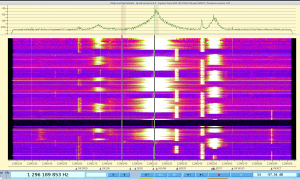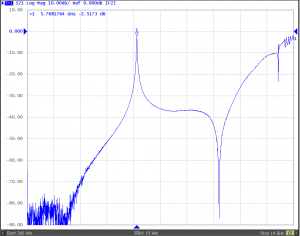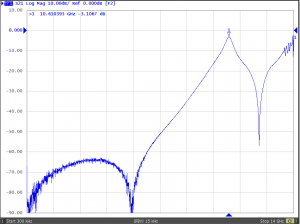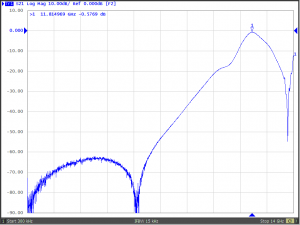Some posts ago i wrote about my new 6cm transverter. I already did a few QSO and i got a 10W PA for a good price. Unfortunately this PA needs 1W of Input and the transverter gives maximum of 250mW output. So a small “driver” is needed. I was researching the options but found no easy solution that also fits my budget constraints. Then i saw some amplifiers sold as WLAN amp. Usually those are for 2.4GHz but i thought if there are some for the one band there are probably also some for the 5GHz band. During the search i found the nice Amp on the picture below that is sold as an amplifier for video transmissions for about 22Euro. It is specified with 3.5/4.5W. But whatever output power for the price i thought i cannot do wrong a lot.
When the device arrived i had to find out the supply voltage. In fact it works with 12V and a first test confirmed it has some gain. The bad thing was that the connectors were reverse SMA and for each connector it was quite some gap between the connector and the PCB. So i thought, “thats a strange matching method” ;)
After removing the soldered shield on top of the PCB one of the screws for mounting the heatsink also came out.
The semiconductors used in the PA are 2x Skyworks SE5004L with a P1dB of 30dBm typical and 34dBm max. So i thought 2W should be possible at least. The gain is specified with 32dB. At the input of the PA is a pi-attenuator.
Later i soldered some nice SMA jacks and then the PA went to storage for quite some while.
Now i found some minutes to remove the attenuator and do some raw measurement of the output power. The gain of the amplifier is about 28..29dB. I did not measure the cable attenuation exactly so do not nail me down on the last dB.
The input vs output figure you can find below. The P1dB is about 2.5W. So considering the samples to be typical there is quite some loss on the PCB. But even in that case for the given price its a nice thing.


